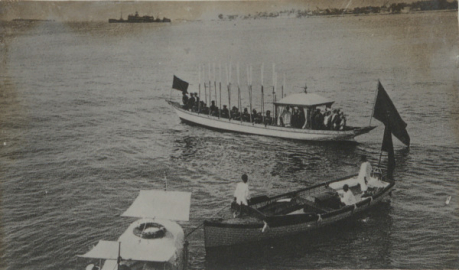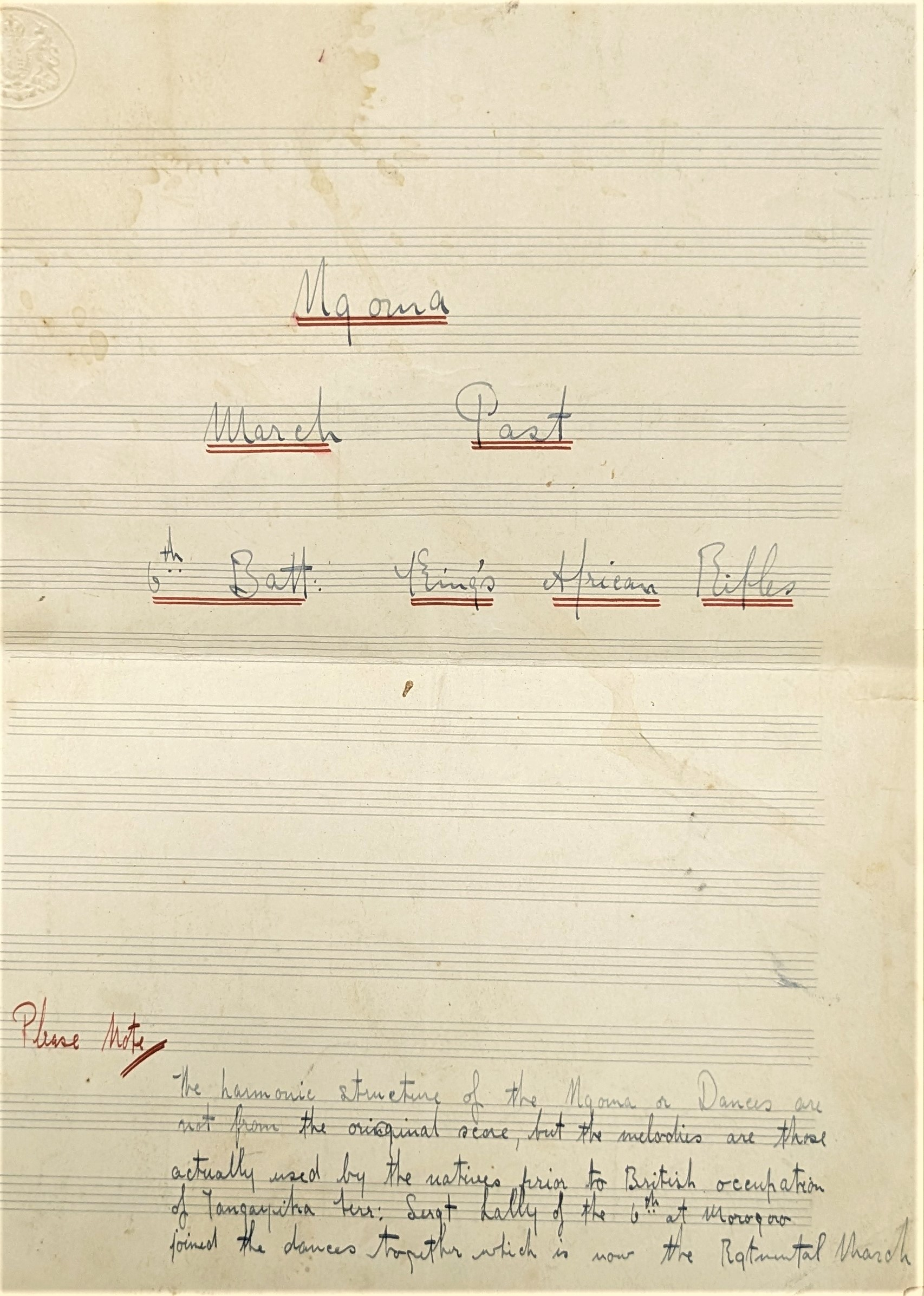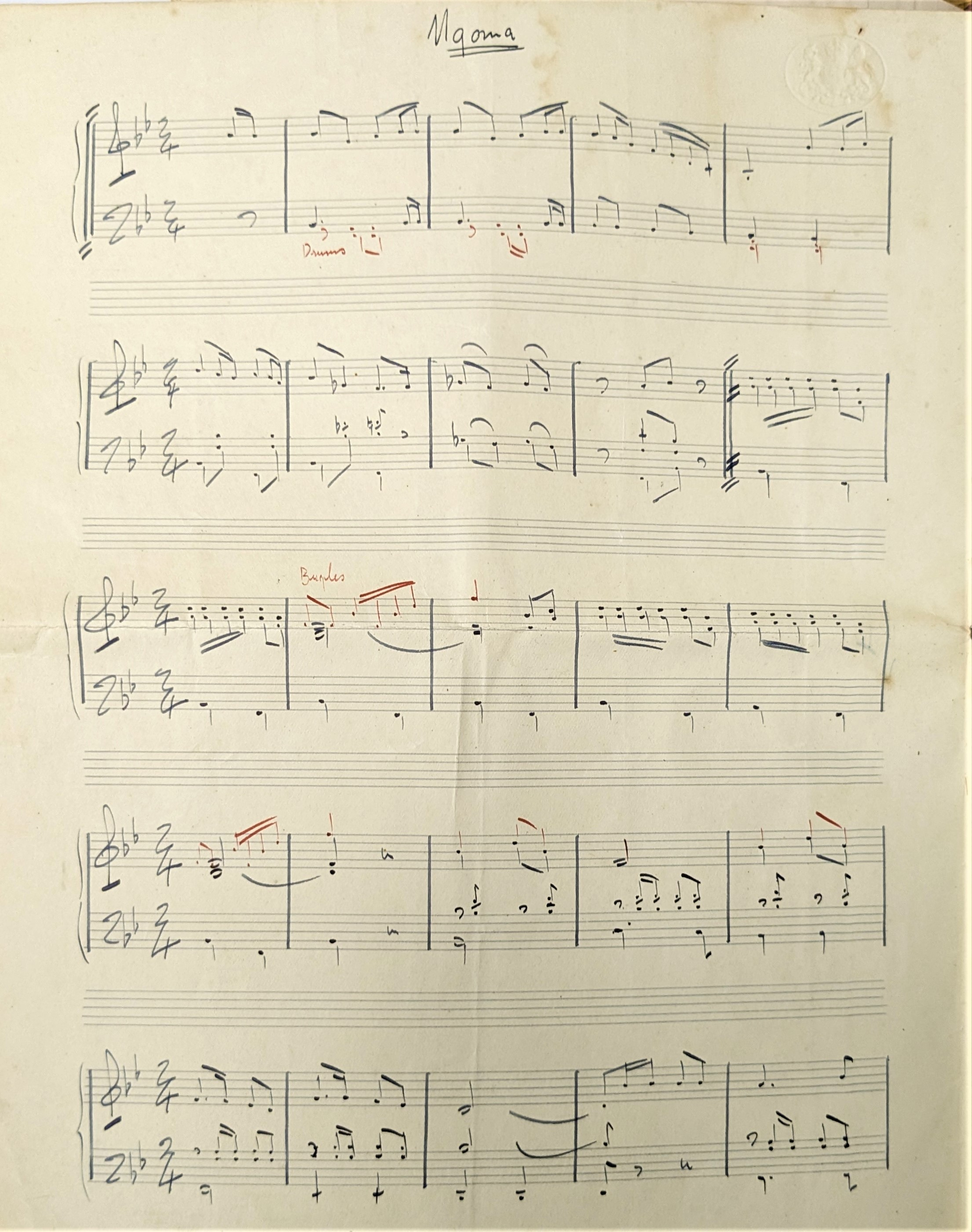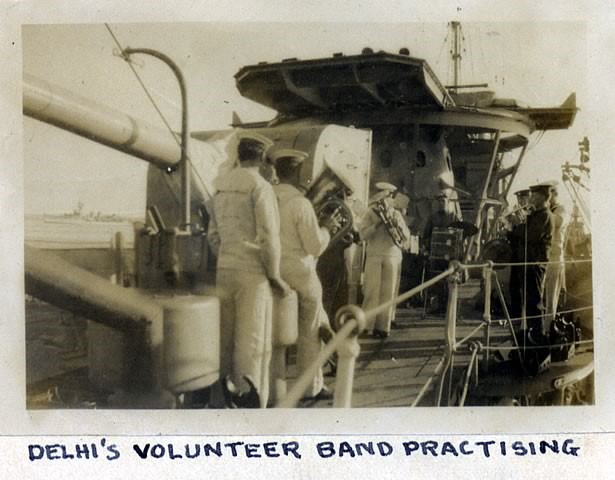British Special Service Squadron - January 1924
- View news filtered by: Interwar
- View news filtered by: Navy Organisation
- View news filtered by: Specialisms
- View news filtered by: Units & Squadrons
- View news filtered by: British Special Service Squadron
- View news filtered by type: Blog

In this ongoing blog series, the National Museum of the Royal Navy is following the route of the British Special Service Squadron during the centenary of its voyage. In this entry we discuss their travels up the East Coast of Africa.
"People were standing in conspicuous positions waving looking-glasses up and down, thus throwing the reflection of the sun towards us ... it was a wonderful sight, it looked like a cluster of diamonds - a most unique method of saying goodbye." RNM 2015/175/1 Captain Round-Turner of HMS Dauntless.
After spending Christmas in Cape Town, the British Special Service Squadron split to cover more ports on the next leg of the tour. On 2 January 1924, the Rear-Admiral moved to HMS Delhi, and with HMS Dauntless, departed from Cape Town and sailed for the East Coast of Africa, specifically Mombasa (Kenya) and Zanzibar.
Foggy weather at the next stop, Port Elizabeth (Gqeberha, Eastern Cape of South Africa), meant the planned visit was disrupted. With the ships eventually sailing out for East London on 4 January 1924. The swell in the Bay at East London also prevented the public from visiting the ships. However, small craft came out, bringing visitors to wave and cheer the Battle Cruisers as they arrived.
By 6 January the weather was still foggy. So much so that Captain Round-Turner was concerned, fearing that ‘we would be robbed of our visit to Durban’. Fortunately, the weather lifted, and hundreds of people gathered on the large quay to see the ships come in.
News of their arrival had been chalked on the pavement outside the Durban Town Hall, indicating the Battle Cruisers were staying two days rather than one. Fuel economy meant that the stay at Durban could only be one day. This meant the squadron could make a steady speed up to Dar es Salaam and Zanzibar. The eager visitors were not aware that an estimated 110,000 tons of oil fuel was calculated in the original planning, with excess cost amounting to £160,000. (ADM 116/2219: Cruise of the Special Service Squadron 1923-24)
The remainder of the fleet sailed from Cape Town this day, with the exception of HMS Dragon, which was detained in Simon’s Bay. HMS Danae went to Dar es Salaam, a British mandate known as Tanganyika Territory (population 3,500,000). A mandate was an authorisation granted by the League of Nations to a member nation in order to govern a former German colony following the First World War.
The formal celebrations at Dar es Salaam included a piece of music by the 6th Battalion of the King’s African Rifles, the Mg oma March Past (possibly an adapted spelling of Mang'oma).


This copy of the sheet music is held by the National Museum of the Royal Navy. The comments on the sheet state that the harmonic structure is not from the original score. Rather, that the melodies are those used locally. Formal band music impacted on regional culture and music, as Suzel Ana Reily and Katherine Brucher say, "these ensembles are found in religious processions and funerals, military maneuvers and parades, and popular music genres throughout the world … spread globally through colonialism, militarism and missionary work".
Music was used for more than formal occasions. It was also a popular leisure activity in the Royal Navy, with many ships having a volunteer band. In fact, a concert was given by the personnel of HMS Danae at the Casino at Dar es Salaam.

On 12 January, HMS Delhi and HMS Dauntless anchored in Kilindini Harbour, the natural deep-water inlet at Mombasa, Kenya. Rear-Admiral Hubert Brand was received on landing by the Liwali of the Coast Sheikh Ali Bin Salim (the representative of the Sultan), the Senior Commissioner and the Resident Commissioner and a Guard of Honour of the King’s African Rifles.
There was some comment by the local dignitaries that they had been visited by only two light cruisers. The President of the Chamber of Commerce commented and "emphasised the importance of impressing the native mind with the size and power of the British navy" (Mitcham, 2019). While the stated aims of the cruise were to improve joint co-operation and internal Royal Navy training, the tour was also a diplomatic exercise to impress residents with the size of the ships and their well-trained crew.
Despite the disappointment that the battle cruisers were not there, Scott O’Connor the journalist who travelled with the squadron, recalled 500 people visited the ships, including "thirty Arab chieftains and forty native chiefs from the interior of the country … some of them who had never before set eyes upon a ship of war, had travelled eight hundred miles to pay their visit."
Meanwhile HMS Hood, HMS Renown, and HMS Dunedin had arrived at Zanzibar. With the southern point only 25 miles from Dar es Salaam (Tanzania), they were greeted and visited by the Sultan, Khalifa Bin Harud. All the ships then sailed from their respective ports on 17 January for the nine-day voyage to Trincomalee, Sri Lanka.
If you want to learn more about the British Special Service Squadron you can visit our digital collection on the subject.
References
ADM 116/2219: Cruise of the Special Service Squadron 1923-24. Records compiled by the Board of Admiralty, Record Office, 1809-1964. The National Archive
Burnett, Phillip, Erin Johnson-Williams &Yvonne Liao. Music, Empire, Colonialism: Sounding the Archives. Postcolonial Studies. Volume 26, 2023 - Issue 3: Pages 345-359. Published online: 22 Aug 2023
Mitcham, John C. The 1924 Empire Cruise and the Imagining of an Imperial Community. Britain and the World, March 2019, vo. 12, No. 1: pp. 67-88
Ndzovu, Hassan J. Muslims in Kenyan Politics: Political Involvement, Marginalization, and Minority Status. 1 ed. Northwestern University Press, 2014. Accessed 8th January 2024
Reily, S and Katherine Brucher. Brass Bands of the World: Militarism, Colonial Legacies, and Local Music Making. Routledge. 2016. ISBN 9781138251212
RMM 2015/50/1 Diary of Bugler R Newman, HMS Repulse
RNM 1987/497/26 Private diary kept by William Bishop of the commission of HMS Danae
RNM 2015/175/1 Scrapbooks of Charles Round-Turner
Scott O'Connor, Vincent Clarence. The Empire Cruise. Riddle, Smith & Duffus, 1925